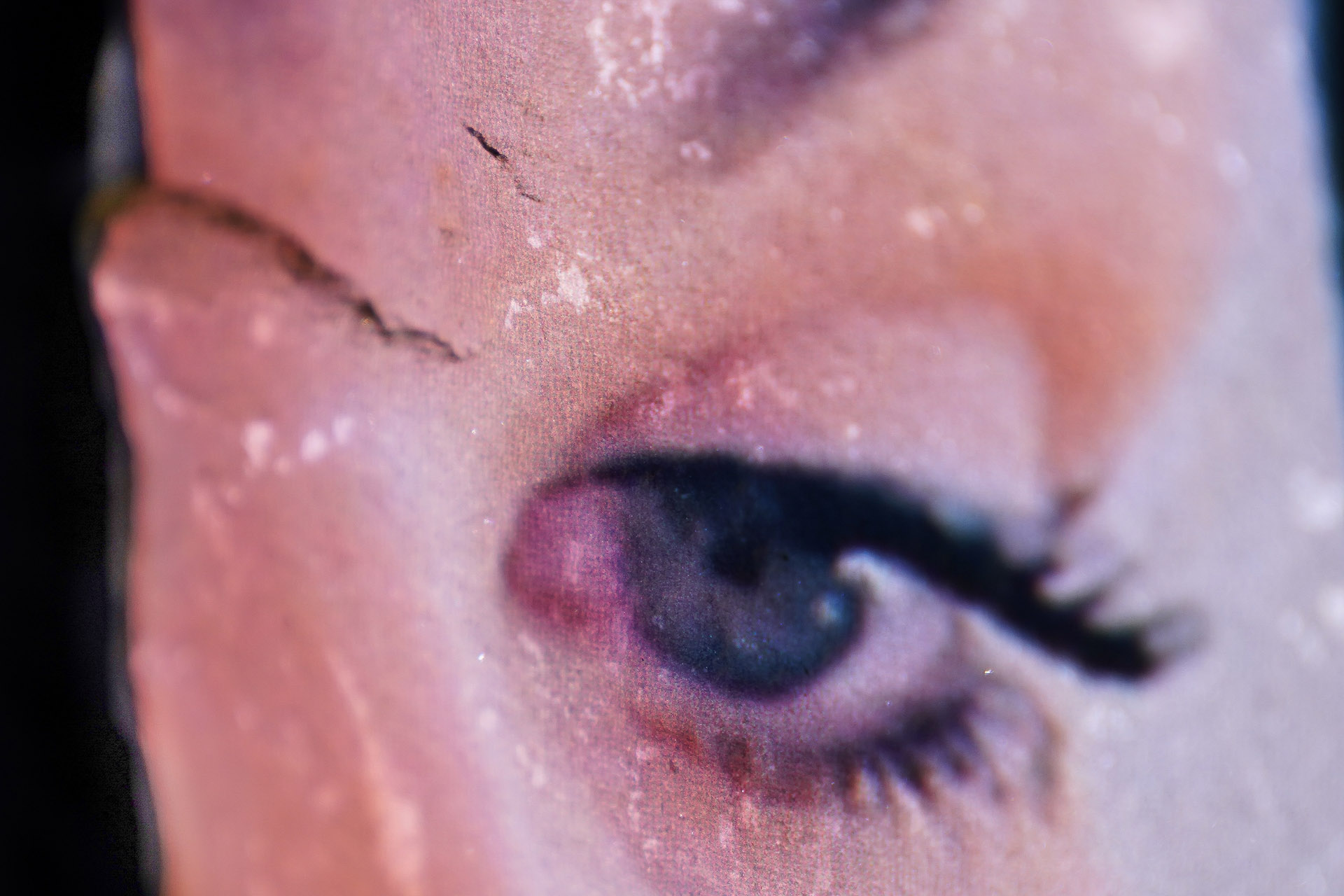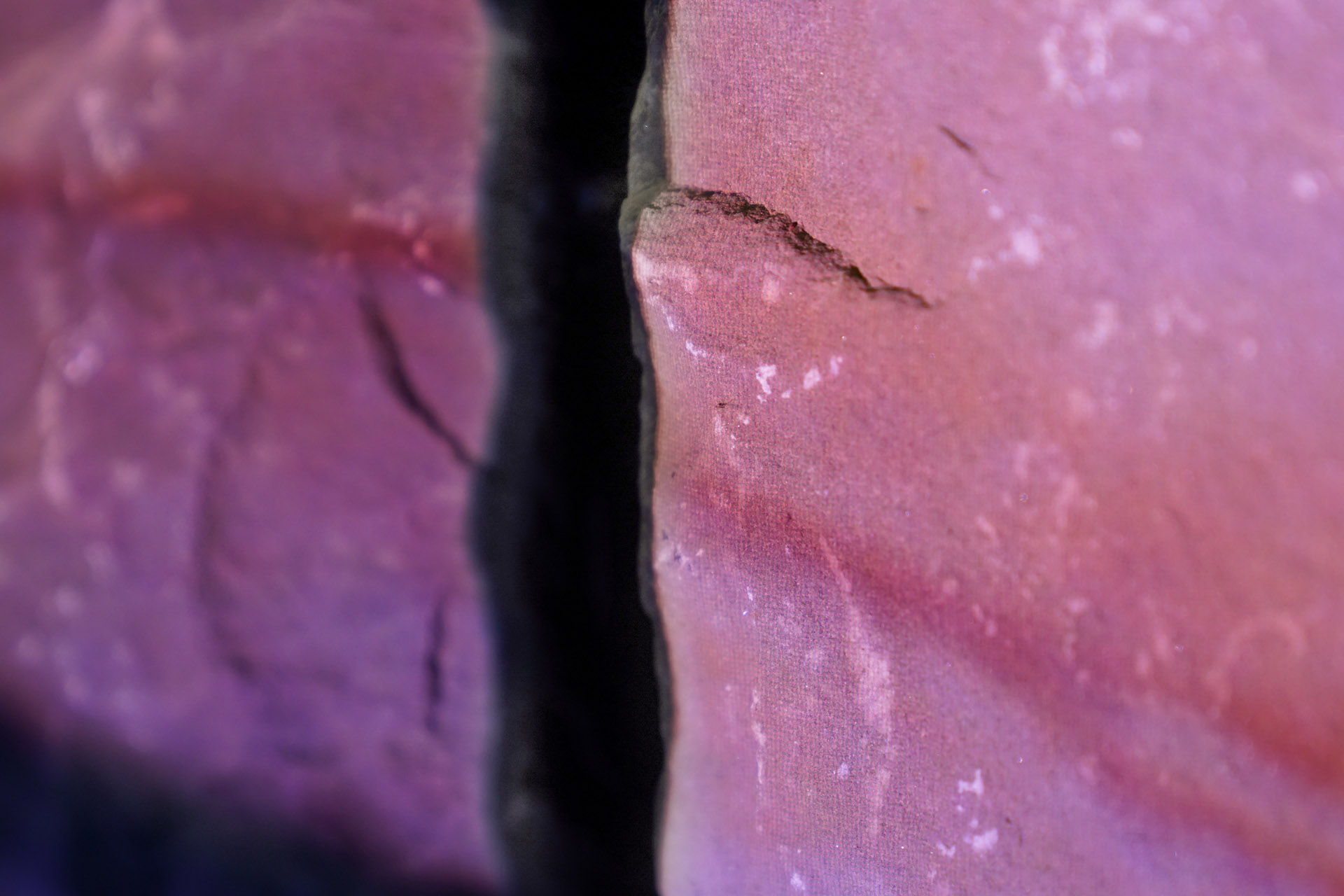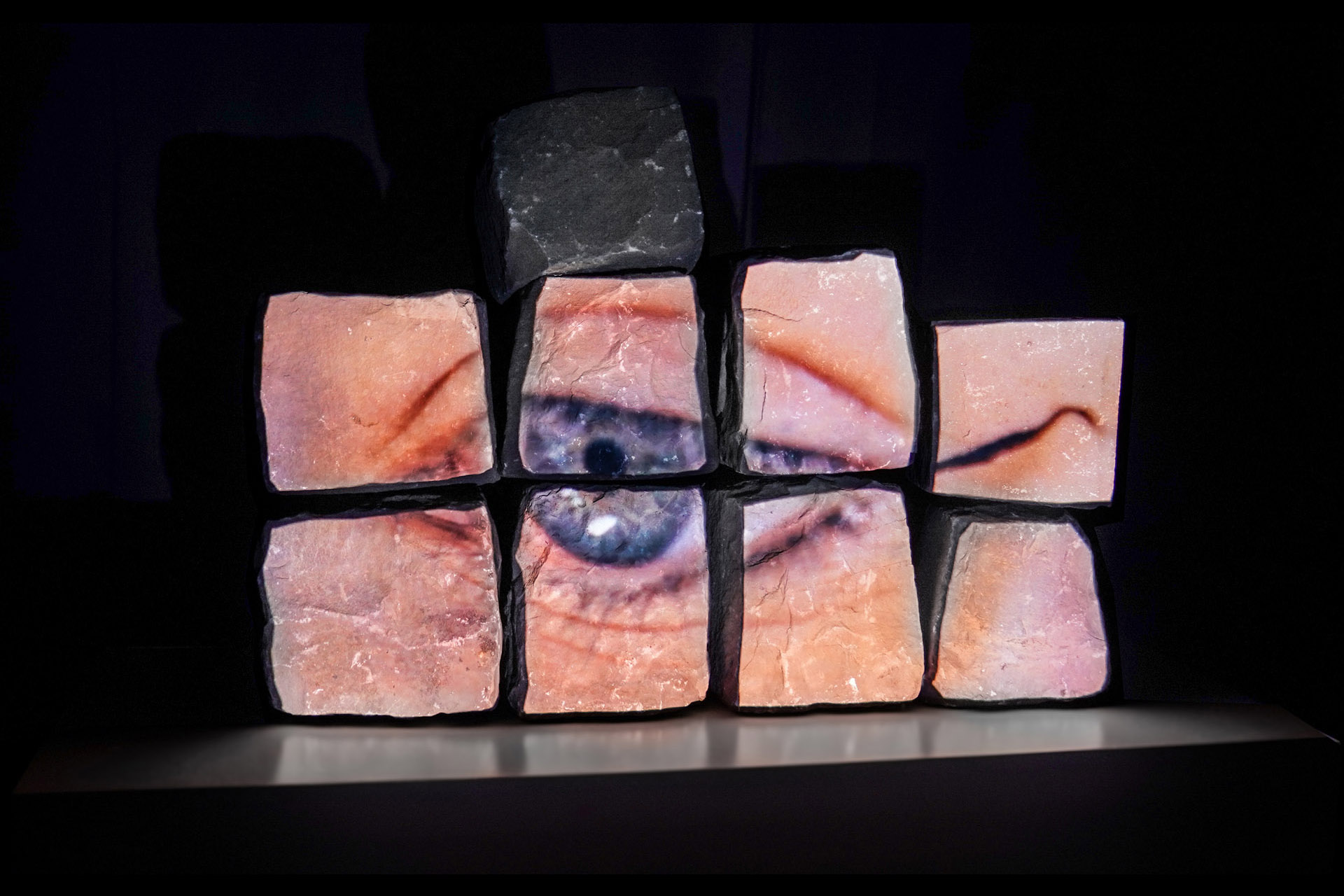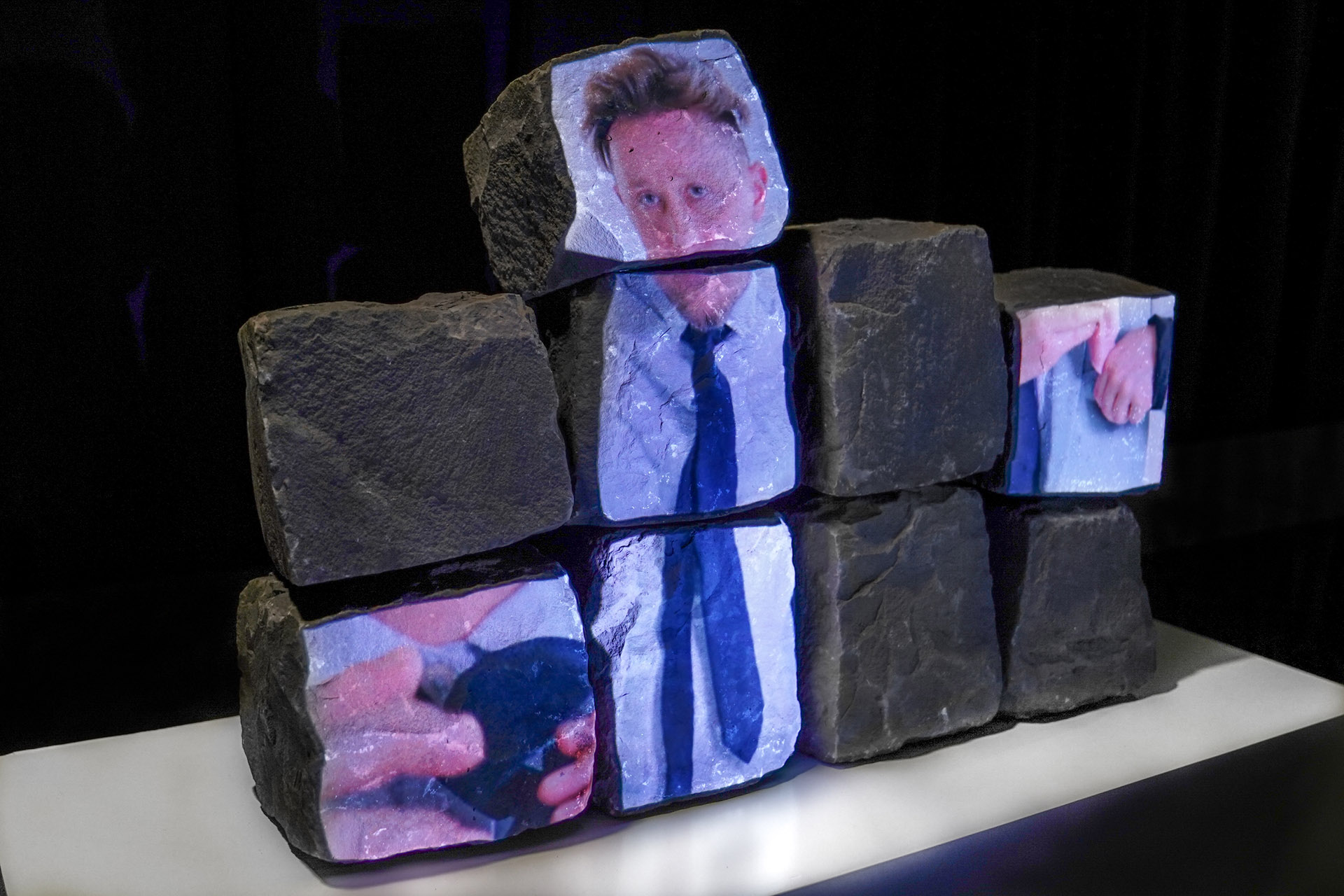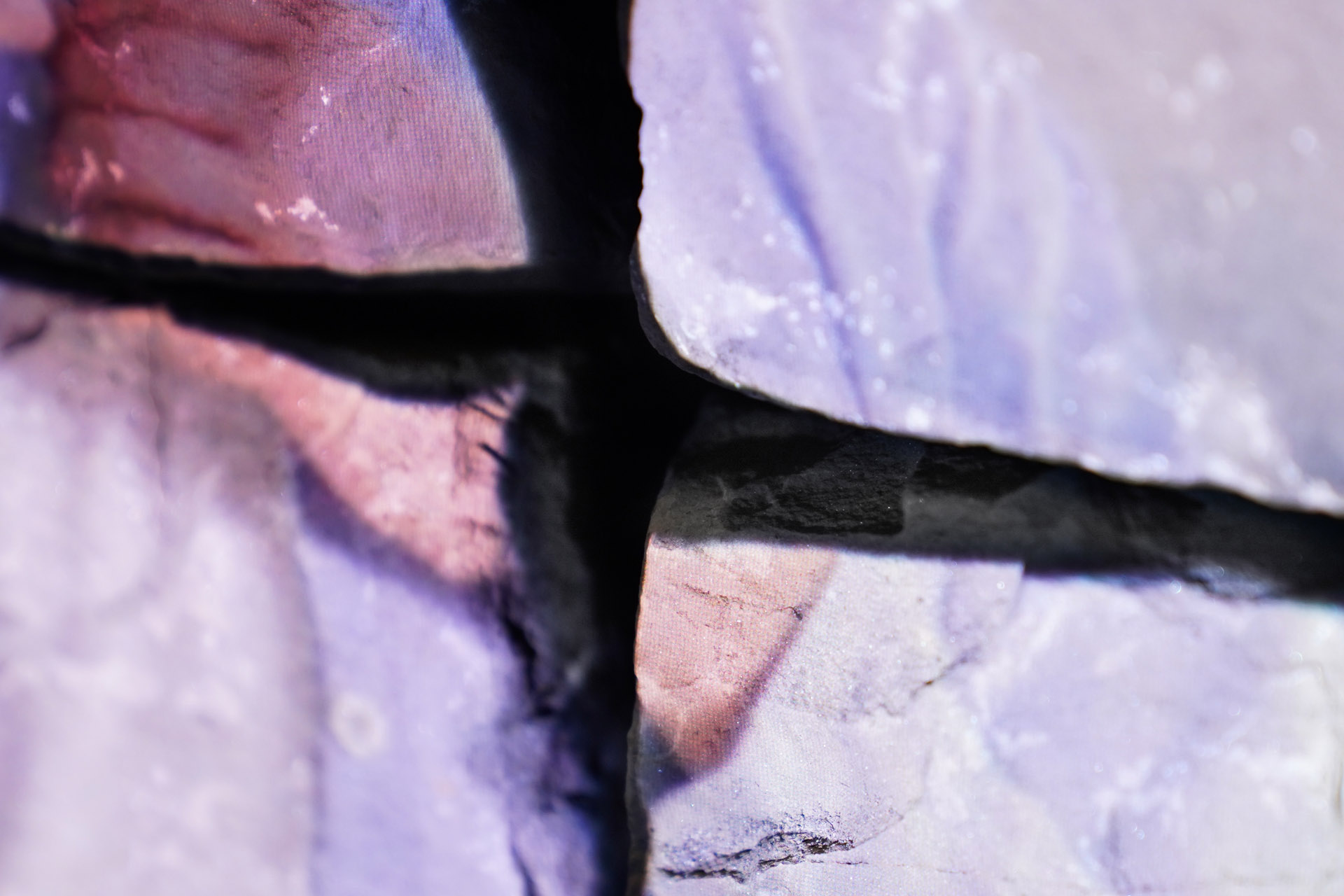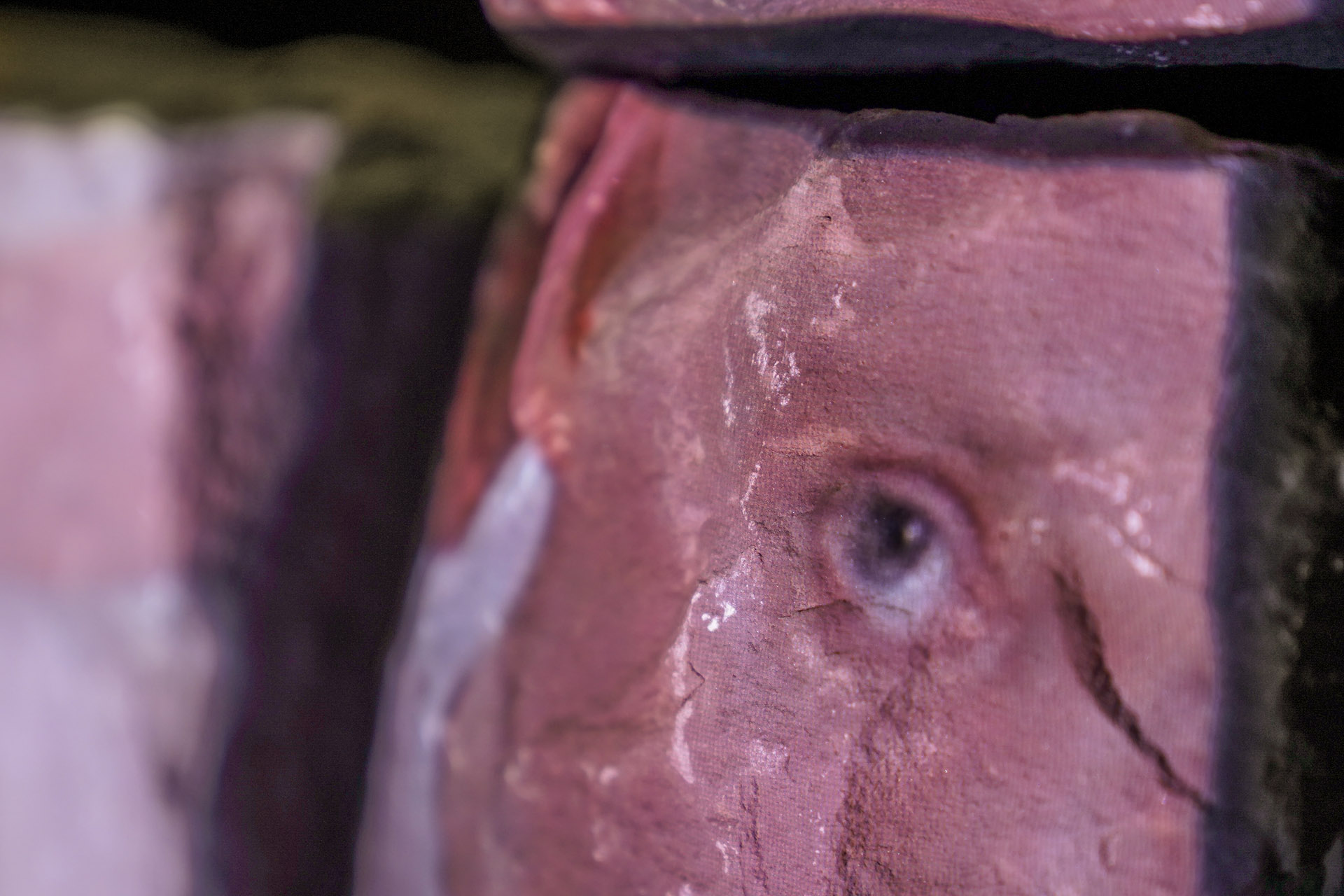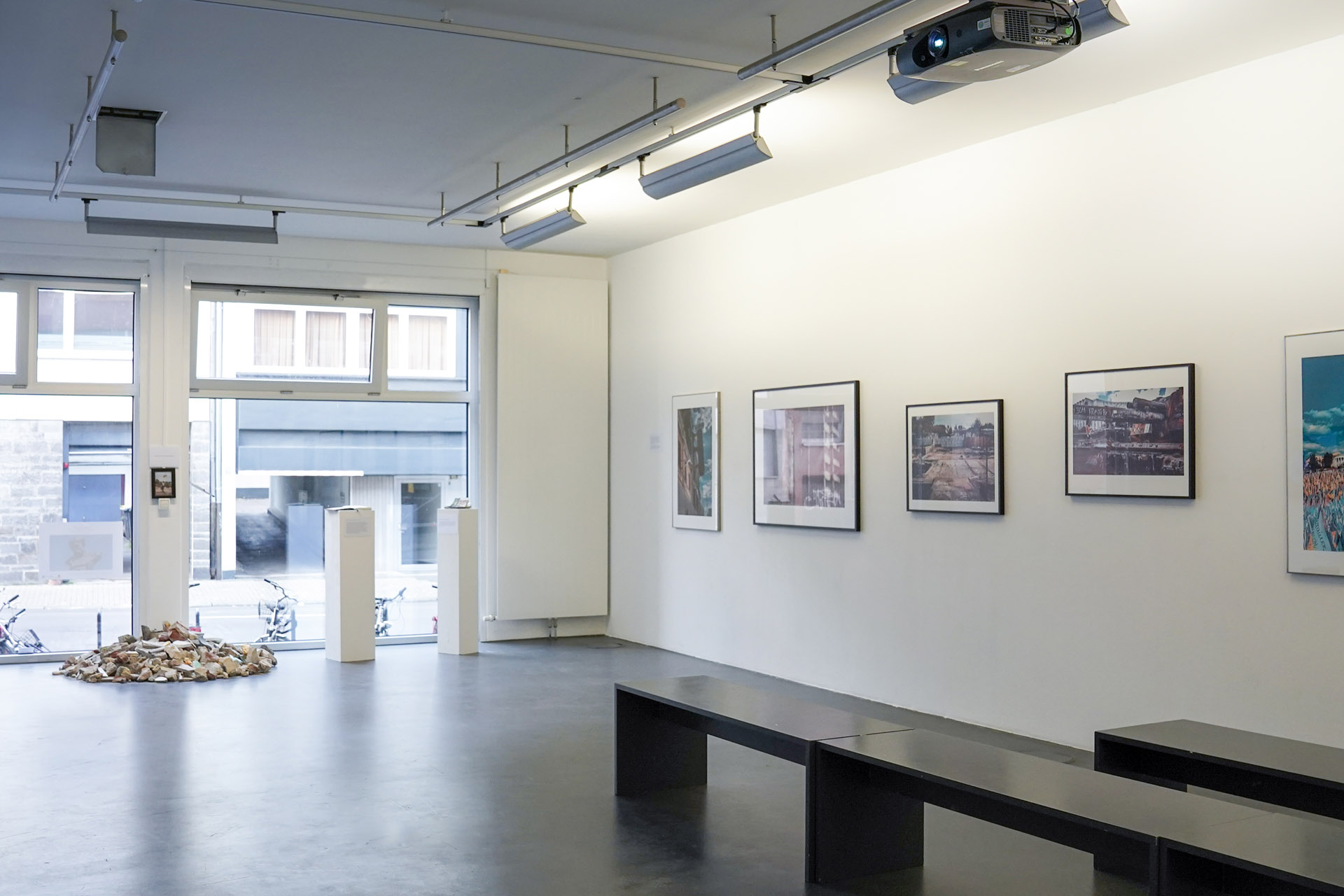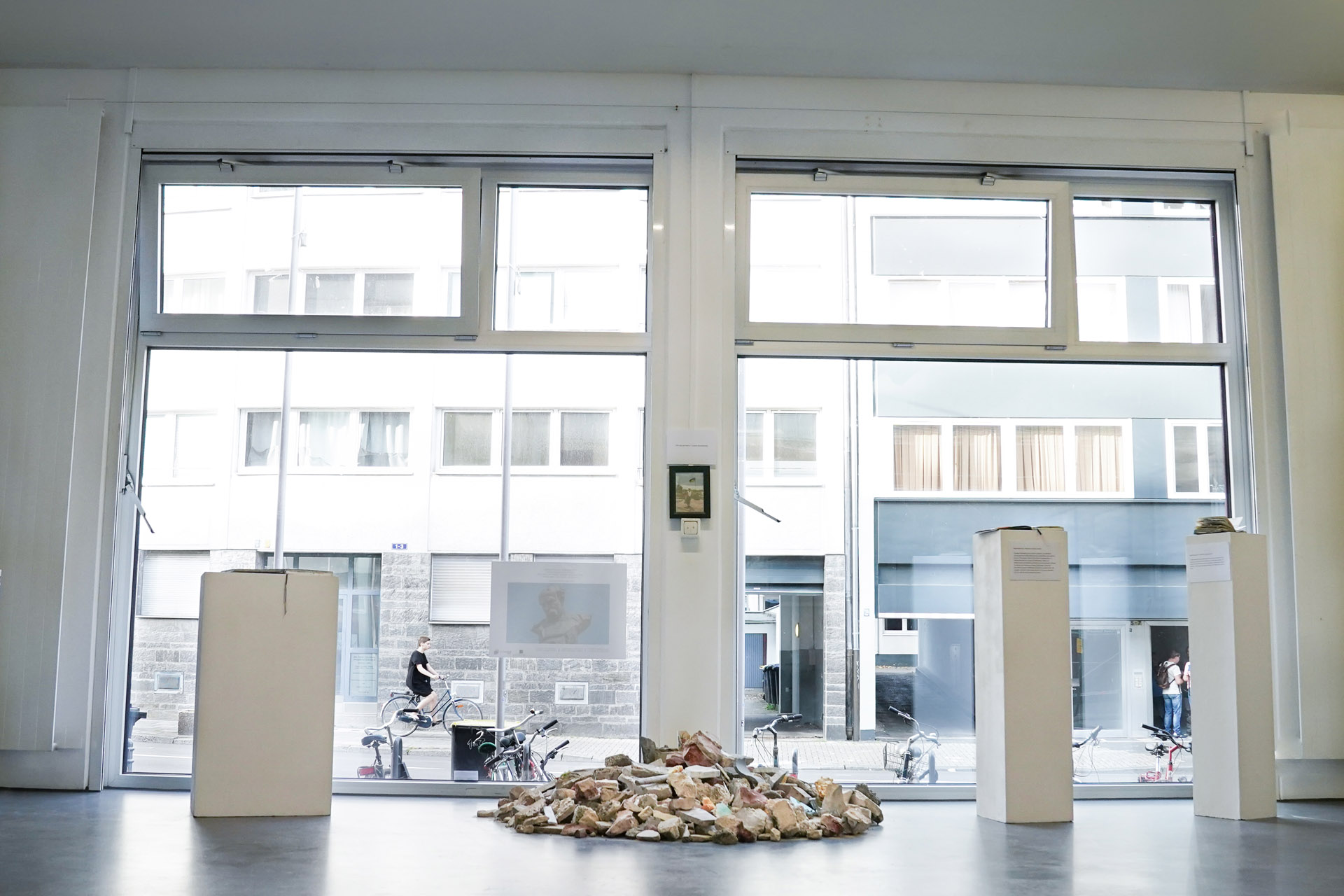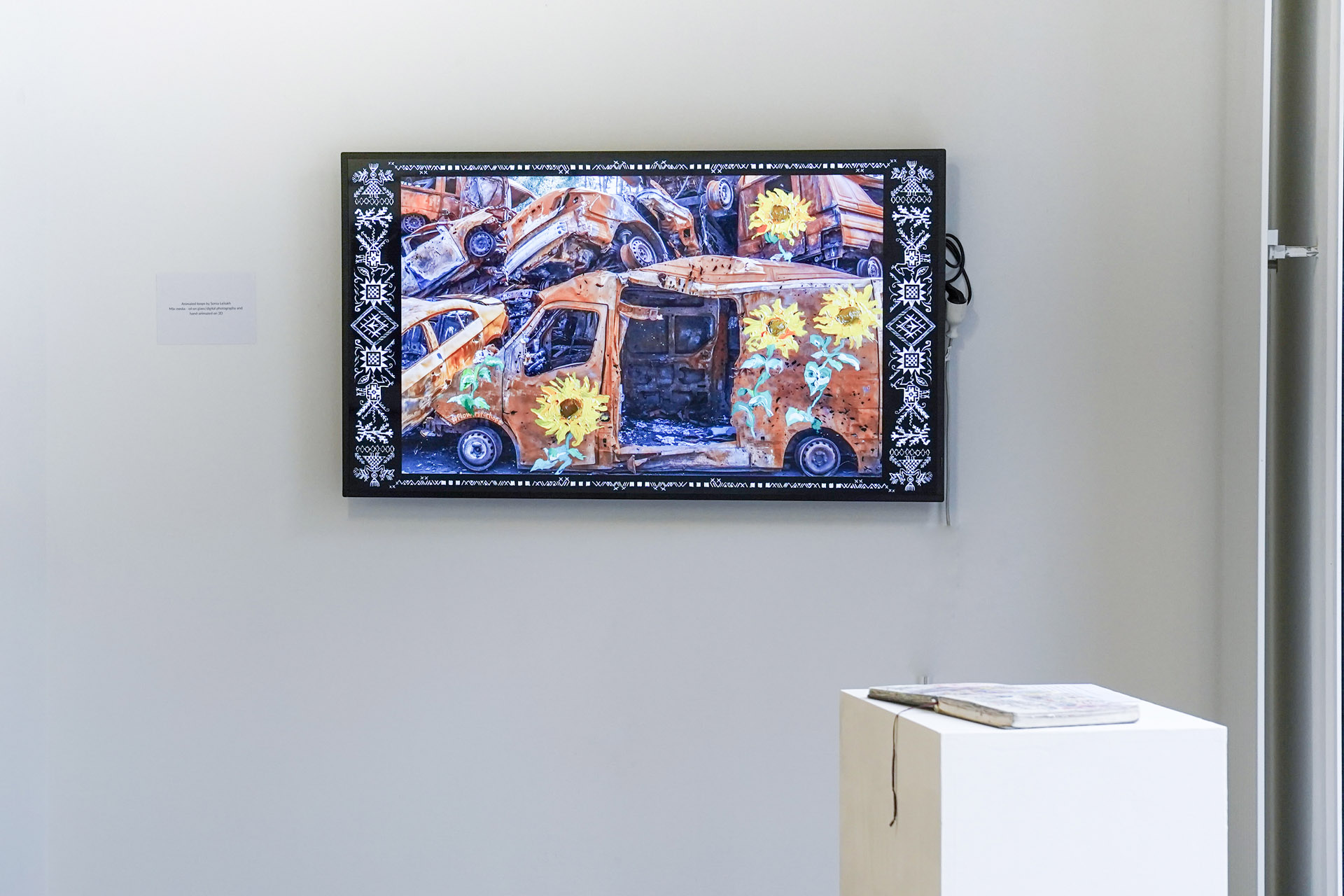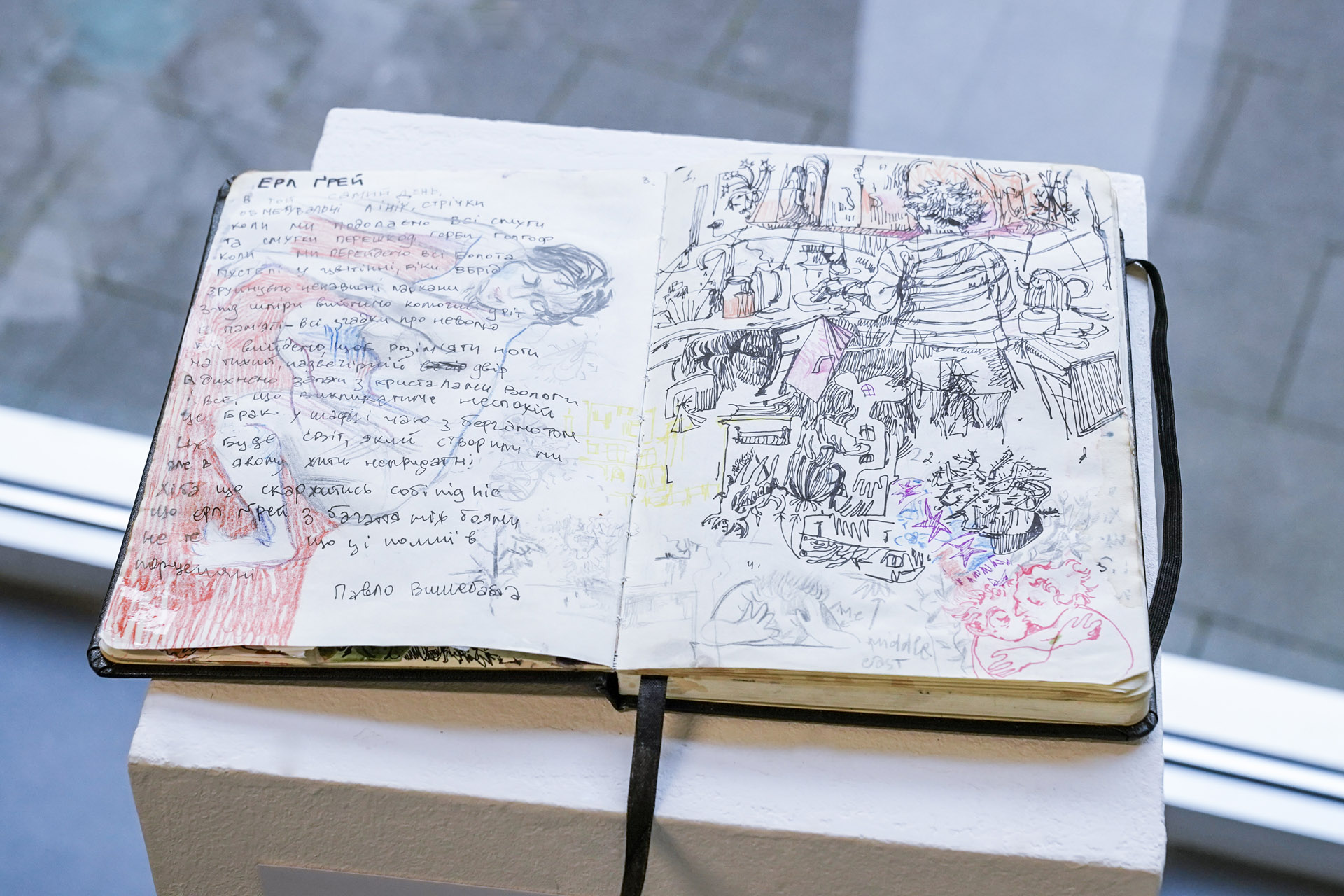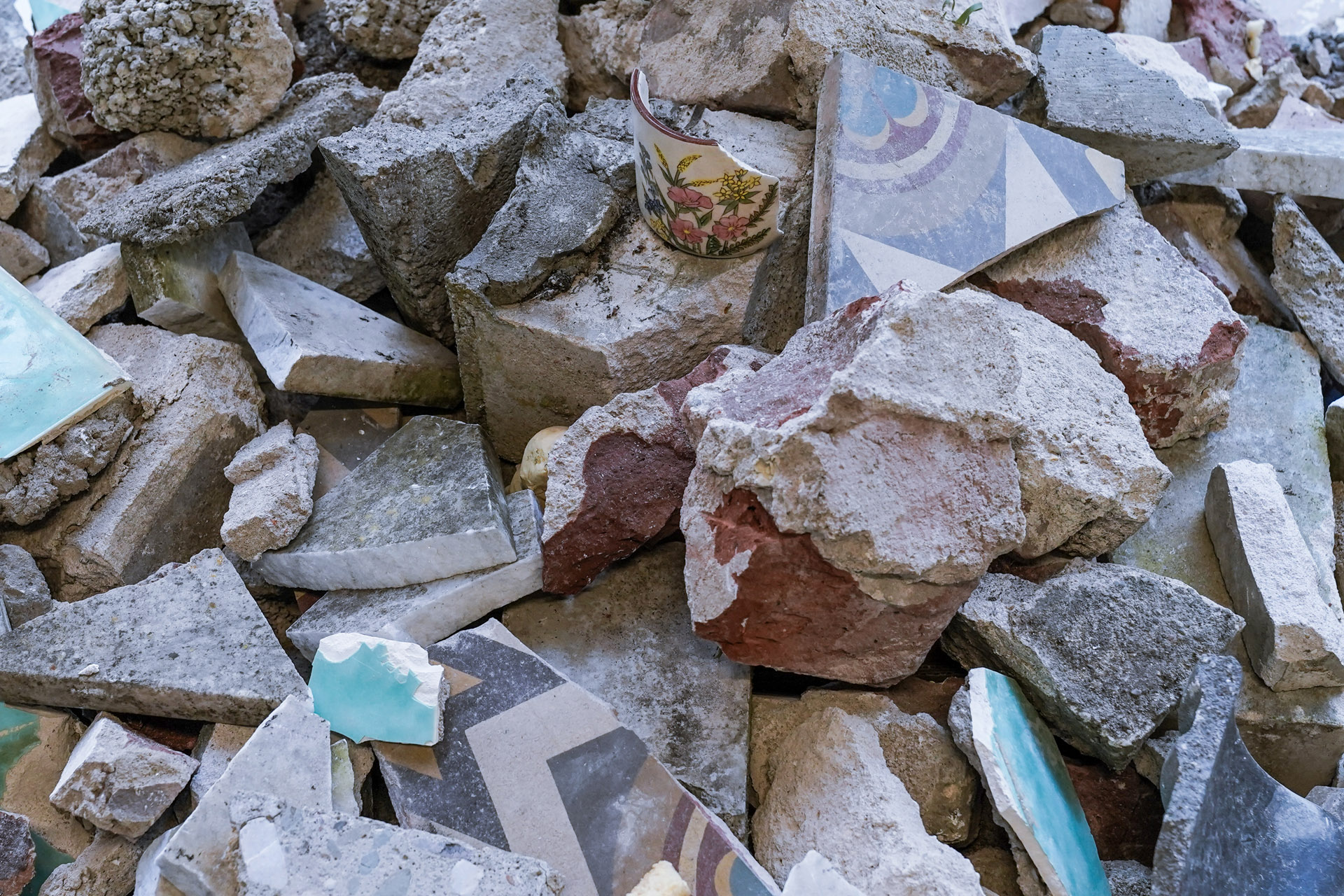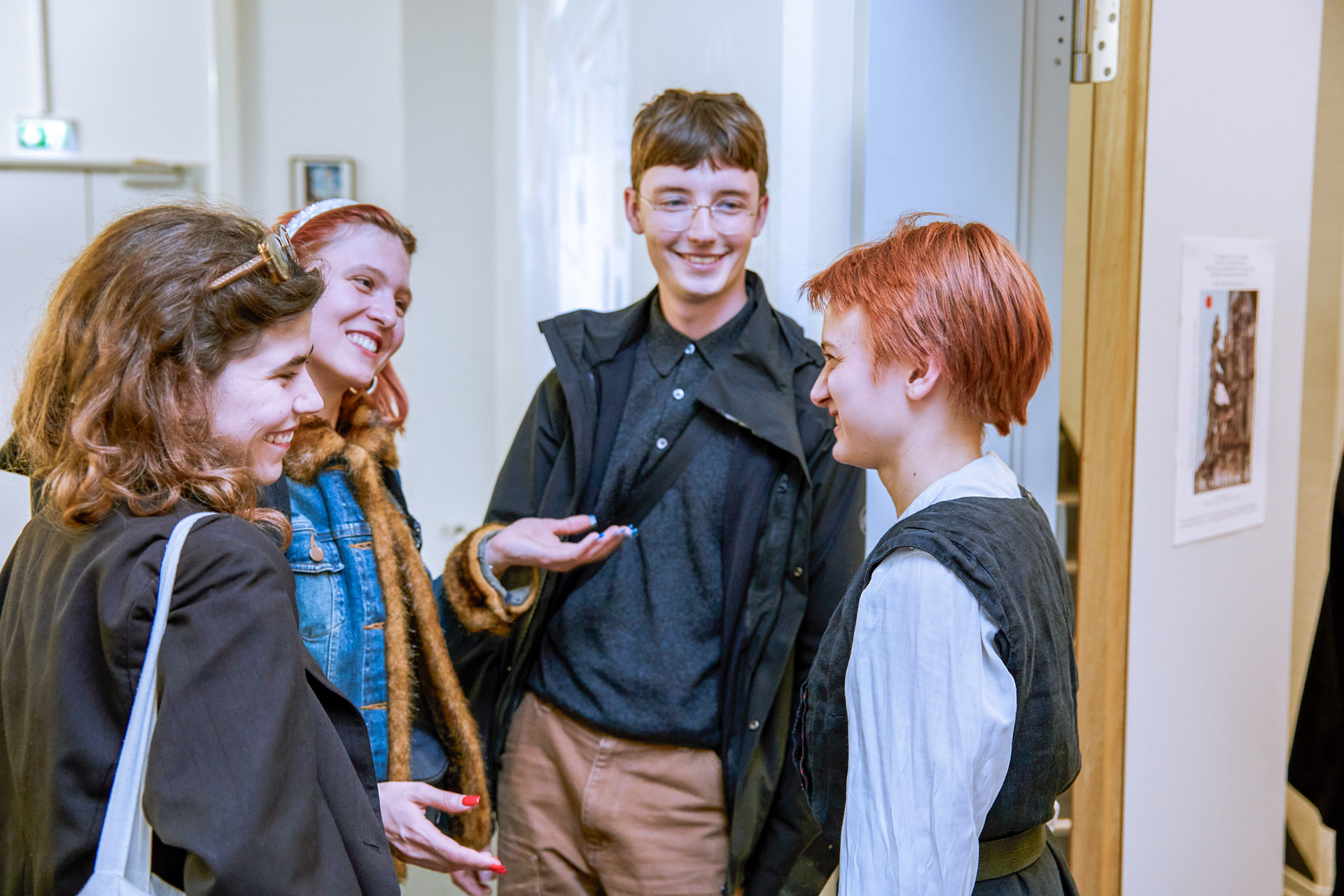Exhibitions / Austellungen / Exhibiciones
EN
Since modern technology offers the ability to project digitally onto uneven surfaces, the following artwork and practical analysis makes the case for cinema to take advantage of projection mapping to bring itself up to date. But above all, to win back lost viewers and attract new ones. By identifying Montage and its mechanisms as a key element for the transportation of information and as a stimulating tool for critical and analytical thinking, it is proposed to conceive cinematic experiences projected onto objects in the first phase, and onto buildings in the second.
As an example of what this new digital cinema might look like, an experimental projection illustrates an architectural fragmented Montage, one that is extended beyond sequential images and into spatial realms.
DE
Da die moderne Technologie die Möglichkeit bietet, digital auf unebene Oberflächen zu projizieren, plädieren das folgende Kunstwerk und die praktische Analyse dafür, dass das Kino die Vorteile des Projection Mapping nutzt, um sich auf den neuesten Stand zu bringen. Vor allem aber, um verlorene Zuschauer zurück und neue dazu zu gewinnen. Durch die Identifizierung der Montage und ihrer Mechanismen als Schlüsselelement für den Transport von Informationen und als anregendes Instrument für kritisches und analytisches Denken wird vorgeschlagen, in der ersten Phase Kinoerlebnisse zu konzipieren, die auf Objekte projiziert werden, und in der zweiten Phase auf Gebäude.
Als Beispiel dafür, wie dieses neue Digitale Kino aussehen könnte, wird eine experimentelle Projektion zur Veranschaulichung des architektonischen fragmentierten Montage dienen, d. h. die Montage wird über sequenzielle Bilder hinaus auf räumliche Untersuchungen ausgedehnt.
ES
Dado que la tecnología moderna ofrece la posibilidad de proyectar digitalmente sobre superficies irregulares, la siguiente obra de arte y análisis práctico aboga por que el cine aproveche el mapping de proyección para ponerse al día. Pero, sobre todo, para recuperar a los espectadores perdidos y atraer a otros nuevos. Identificando el montaje y sus mecanismos como elemento clave para el transporte de información y como herramienta estimulante del pensamiento crítico y analítico, se propone concebir experiencias cinematográficas proyectadas sobre objetos, en una primera fase, y sobre edificios, en una segunda.
Como ejemplo de lo que podría ser este nuevo cine digital, una proyección experimental ilustra un Montaje arquitectónico fragmentado, que se extiende más allá de las imágenes secuenciales y se adentra en ámbitos espaciales.
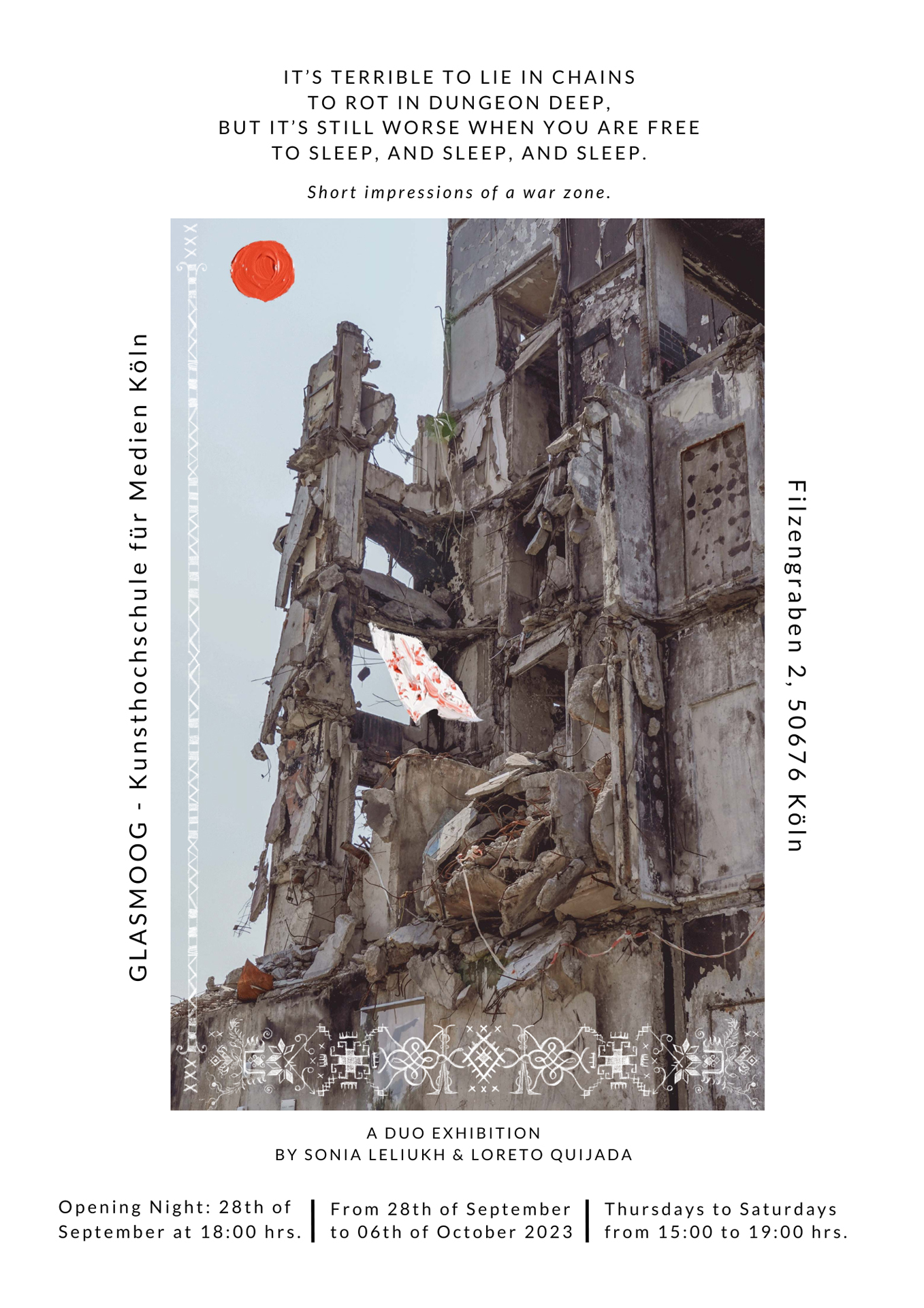
It’s terrible to lie in Chains
To rot in dungeon deep,
But it’s still worse when you are free
To sleep, and sleep, and sleep.
EN
To truly empathize with a historical event that has been under the world’s gaze for two years, it's essential to connect with personal views. The artists Sonia Leliukh and Loreto Quijada – one from Ukraine and the other from Chile – embarked on a journey to Kyiv to capture everyday existence through various mediums. Their aim is to convey daily life in a war zone. Within this narrative lies a profound duality—mundane life and events in contrast with the stress and hurt from a forced occupation, but also the point of view of those who’ve called this place home their entire lives and the eyes of those witnessing Ukraine for the first time.
Borrowing its title “It’s terrible to lie in chains, to rot in a dungeon deep, but it’s still worse when you are free to sleep, and sleep, and sleep” fom a poem by the Ukrainian painter and poet Taras Ševčenko (1814-1861), the exhibition weaves together several formats and mediums such as videos, photography, animations, and installations to offer a mosaic of perspectives on this intricate tapestry of human existence. The artists’ primary objective is to create awareness thus avoiding oblivion, and to raise donations for Liubov Bondarenko, the woman who inspired us to create these artworks.
About the artists:
Sonia Leliukh is a 2D Animator and activist from Kyiv, Ukraine. Creator of the Animated Short film: “Frog with Horns,” organizer of the event “Cultural Front: Art from Ukraine during the war”. Fresh Student of Academy of Media Arts Cologne. Always driven by desire to show Ukrainian culture through art. Aims to use different techniques and discover new methods of traditional animation.
Loreto Quijada is a filmmaker and media artist from Chile with an intuitive style of narrative techniques aiming to share artistic human-focused endeavors. She combines Latin American and European perspectives to ideate pluralistic, out-of-the-box experiences that blur out genre codes, format delimitations, and language frontiers.
DE
In der Auseinandersetzung mit einem historischen Ereignis, wie es sich seit zwei Jahren unter den Augen der Weltöffentlichkeit in der Ukraine ereignet, ist die Begegnung mit persönlichen Erfahrungen und Betrachtungsweisen von zentraler Bedeutung. Die beiden Künstlerinnen Sonia Leliukh und Loreto Quijada – die eine aus der Ukraine, die andere aus Chile – haben sich daher gemeinsam auf die Reise nach Kiew begeben, um mit verschiedenen künstlerischen Mitteln Eindrücke vom alltäglichen Leben in einem Kriegsgebiet einzufangen. Ihre Erzählung ist geprägt von dem fundamentalen Kontrast zwischen dem Alltag in der Ukraine mit seinen profanen Ereignissen und den Verletzungen und dem permanenten Stress, den die militärische Besetzung mit sich bringt. Doch es treffen auch die verschiedenen Sichtweisen der beiden Künstlerinnen aufeinander: Für die eine geht es um ihr Zuhause, während die andere zum ersten Mal die Ukraine bereist.
In ihrer Ausstellung „It’s terrible to lie in chains, to rot in a dungeon deep, but it’s still worse when you are free to sleep, and sleep, and sleep”, deren Titel einem Gedicht des ukrainischen Malers und Dichters Taras Ševčenko (1814–1861) entlehnt ist, verknüpfen Sonia Leliukh und Loreto Quijada verschiedene Formate und Medien zu einem vielschichtigen Bild. Videos, Fotografien, Animationen und installative Elemente ermöglichen kaleidoskopartige Perspektiven auf das komplizierte Gefüge menschlicher Existenz. Ziel ist, Bewusstsein zu schaffen und gegen das Vergessen anzugehen. Im Rahmen der Ausstellung sollen außerdem Spenden für Liubov Bondarenko gesammelt, werden, die die beiden Künstler*innen zu ihren Kunstwerken inspiriert hat.
Über die beiden Künstlerinnen:
Die 2D-Animatorin und Aktivistin Sonia Leliukh stammt aus Kiew. Nach einem Gastsemester nimmt sie zum WS 2023 ihr Studium an der Kunsthochschule für Medien Köln auf. In ihrer künstlerischen Arbeit erforscht sie neue Methoden der Animation und ist getrieben von dem Wunsch, die ukrainische Kultur durch Kunst zu zeigen. Leliukh ist Organisatorin der Veranstaltung "Cultural Front: Kunst aus der Ukraine während des Krieges".
Die chilenische Filmemacherin und Medienkünstlerin Loreto Quijada arbeitet vorwiegend mit intuitiven Erzähltechniken. Sie verbindet lateinamerikanische mit europäischen Perspektiven und erzeugt auf diese Weise vielschichtige, unkonventionelle Erfahrungsmöglichkeiten, die Genrecodes sowie Format- oder Sprachgrenzen überwinden.
ES
Cuando se aborda un acontecimiento histórico como el que está teniendo lugar en Ucrania desde hace dos años ante los ojos de la opinión pública mundial, el encuentro con las experiencias y perspectivas personales reviste una importancia capital. Por ello, las dos artistas Sonia Leliukh y Loreto Quijada -una ucraniana y la otra chilena- han viajado juntas a Kiev para captar impresiones de la vida cotidiana en una zona de guerra utilizando diversos medios artísticos. Su narrativa se caracteriza por el contraste fundamental entre la vida cotidiana en Ucrania, con sus acontecimientos mundanos, y las heridas y el estrés permanente que conlleva la ocupación militar. Pero también confluyen las diferentes perspectivas de las dos artistas: para una, se trata de su hogar, mientras que la otra viaja a Ucrania por primera vez.
En su exposición "Es terrible yacer encadenado, pudrirse en las profundidades de una mazmorra, pero aún es peor cuando eres libre y dormir, y dormir, y dormir", cuyo título está tomado de un poema del pintor y poeta ucraniano Taras Ševčenko (1814-1861), Sonia Leliukh y Loreto Quijada combinan diversos formatos y medios para crear una imagen de múltiples capas. Vídeos, fotografías, animaciones y elementos de instalación ofrecen perspectivas caleidoscópicas sobre la complicada estructura de la existencia humana. El objetivo es sensibilizar y combatir el olvido. Como parte de la exposición, también se recogerán donativos para Liubov Bondarenko, quien inspiró a los dos artistas a crear sus obras.
Sobre las dos artistas:
La animadora 2D y activista Sonia Leliukh es de Kiev. Tras un semestre como invitada, comenzará sus estudios en la Academia de Artes Audiovisuales de Colonia en el semestre de invierno de 2023. En su trabajo artístico, explora nuevos métodos de animación y le mueve el deseo de mostrar la cultura ucraniana a través del arte. Leliukh es la organizadora del evento "Frente cultural: arte de Ucrania durante la guerra".
La cineasta y artista audiovisual chilena Loreto Quijada trabaja principalmente con técnicas narrativas intuitivas. Combina perspectivas latinoamericanas y europeas para crear experiencias multicapa poco convencionales que trascienden los códigos de género, el formato y las barreras lingüísticas.
Exhibition / Ausstellung / Exhibición
- 29.09. – 07.10.2023
- GLASMOOG – Raum für Kunst & Diskurs
- Kunsthochschule für Medien Köln
- Filzengraben 2
- 50676 Köln
- Öffnungszeiten | Opening hours:
- Do–Sa, 15:00–19:00 Uhr
- Thurs–Sat, 3 – 7 pm

Glasmoog, Köln




